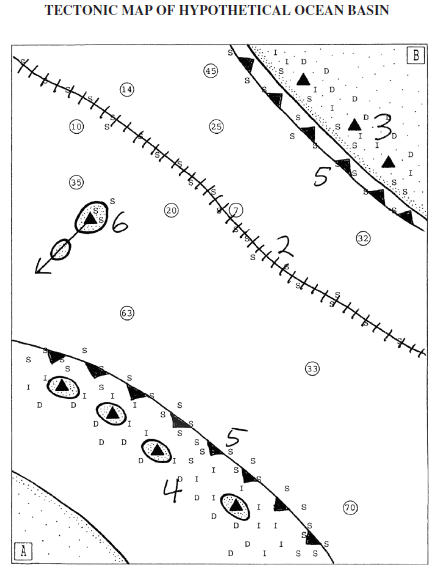Use the following information to calculate the gradient of a stream. If the vertical change is 10 meters in 1 kilometer, then the gradient expressed in m/km is:
A. 1
B. 100
C. 10
Answer: A
You might also like to view...
What evidence shown on the map indicates that this type of boundary is present?
After drawing in the plate boundaries using the appropriate symbols on the tectonic map below, answer the question above. When asked to cite evidence to support your answers, only cite evidence that you can see on this map.

Scale: 1 cm = 300 km 11 inch = 500 miles2
Soil creep is NOT
A) the most common form of mass movement. B) the very slow, gradual movement of material down the slope of a hill. C) more dangerous and dramatic when it occurs on steep slopes and in wet conditions. D) common in areas of permafrost.
Which of the following is true of the length (as measured in kilometers) of a degree of latitude?
A) It is mostly constant at all latitudes. B) It is longer near the equator than near the poles. C) It is shorter near the equator than near the poles. D) It is shorter near the prime meridian than near the international dateline.
Mid-latitude climate generally
A. occur in the northern hemisphere, have precipitation concentrated in the winter, and have monsoonal wind patterns. B. occur in both hemispheres, have relatively even distribution of precipitation, and variable wind patterns. C. occur in the southern hemisphere, have relatively even distribution of precipitation, and have monsoonal wind patterns. D. occur in the northern hemisphere, have relatively even distribution of precipitation, and have westerly wind patterns.